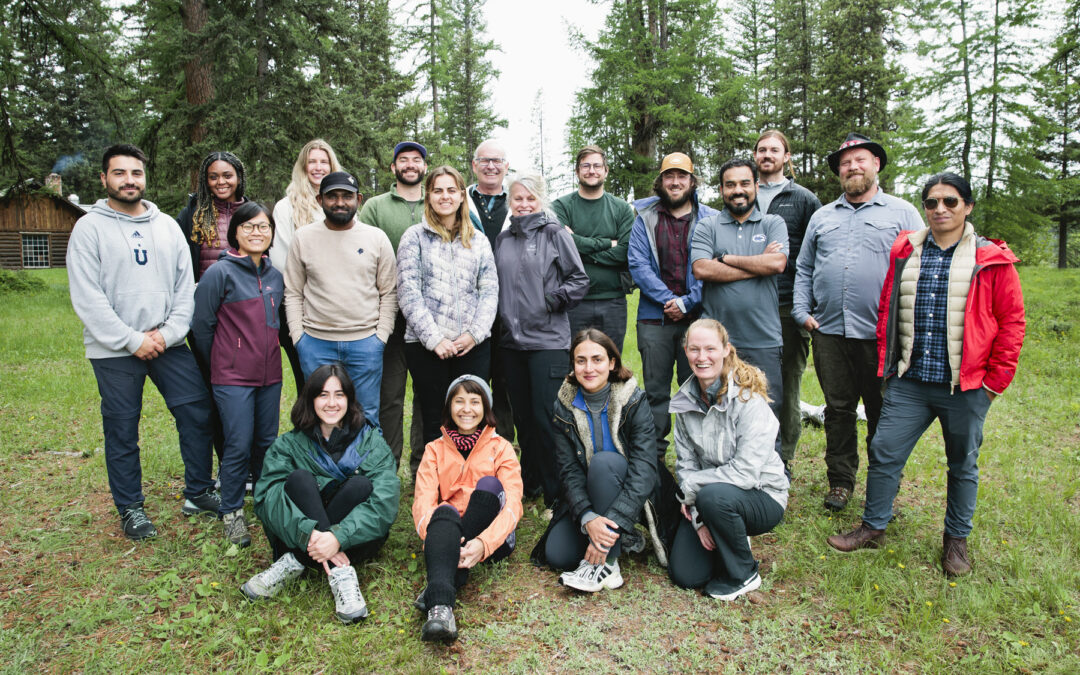The 2023 Launchpad cohort is an amazing group of 16 scientists, engineers, architects, designers and artists. They came from every corner of the globe and from many stages of life. They were united by their love of the natural world, by their curiosity and creativity, and by a common nagging that they wanted to be doing meaningful and fulfilling work without harm. And this group came together in desperate need of an intervention, though we didn’t all know it at the time.
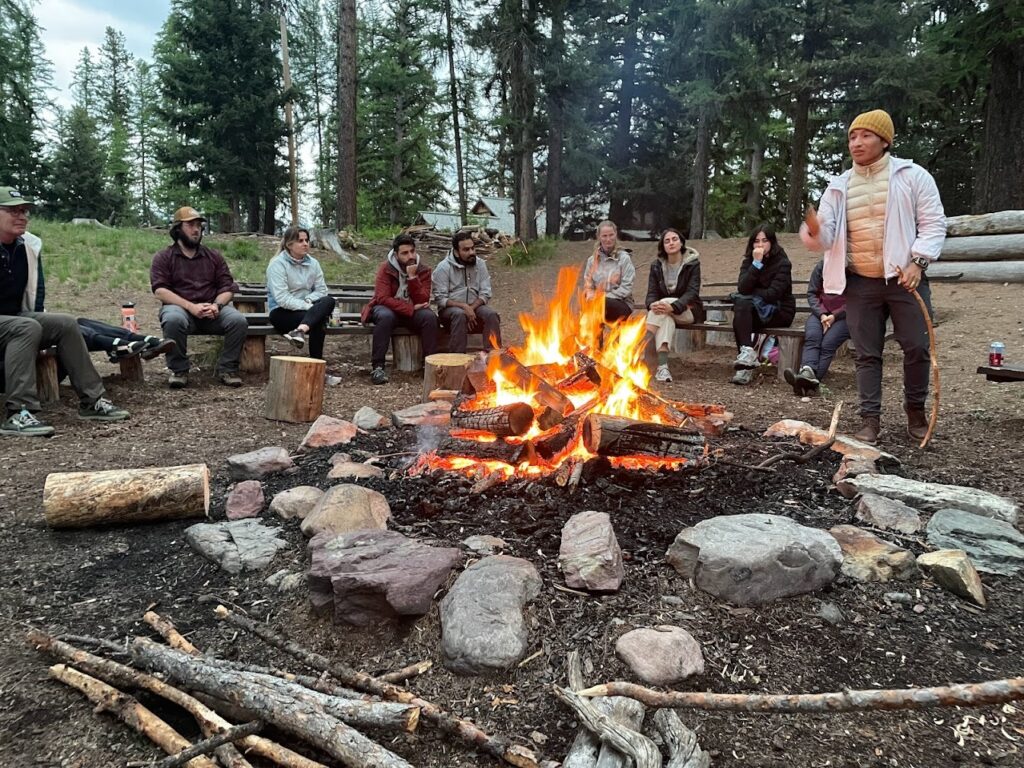
We counted 22 languages spoken around our campfire, though we might have been a little loose with our metrics for fluency. Nothing helps you understand how language shapes our perception like comparing and contrasting with others. And in English, there is something implied in the word nature that feels like we are separate. As if nature is a lovely thing to observe and experience outside of ourselves, synonymous withthe environment. But that’s not how I want us to understand nature. I landed on the phrase living world as a more accurate description. We conduct living world interventions on people who need to reconnect.
Butte. We examined the lessons learned over the last 40 years of attempts to restore the country’s largest Superfund site. We heard from a biologist who is shaping efforts to prevent bird fatalities in the Berkeley pit. And we visited the most clever engineers in the ecosystem: beavers who had found ways to make life flourish where it struggled to take hold of a barren landscape.
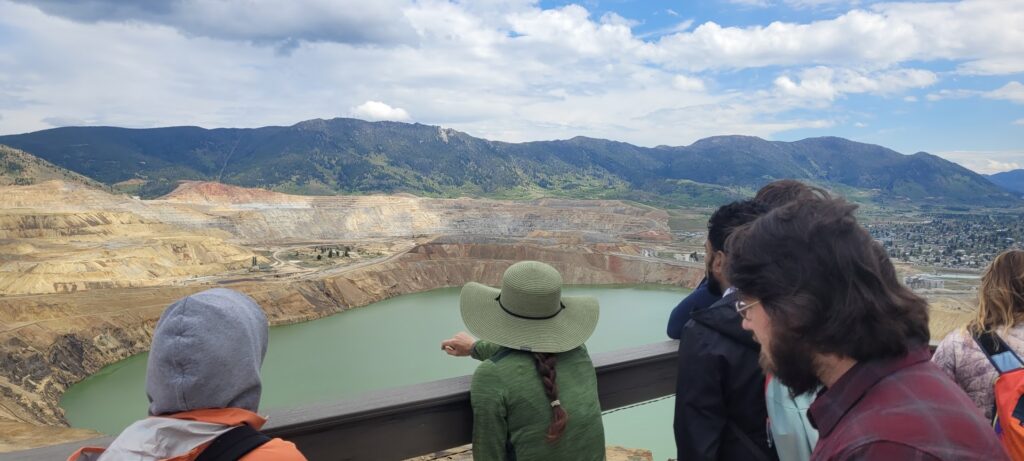
We continued to the Blackfoot river, and picnicked with sculptures in the woods. We traversed green landscapes with snow covered peaks where cows outnumber people by a far cry. We descended into a misty larch forest and an old Conservation Corp built camp on the edge of Seeley lake. The rest of the world melted away as we allowed childlike curiosity to immerse us in the surroundings.
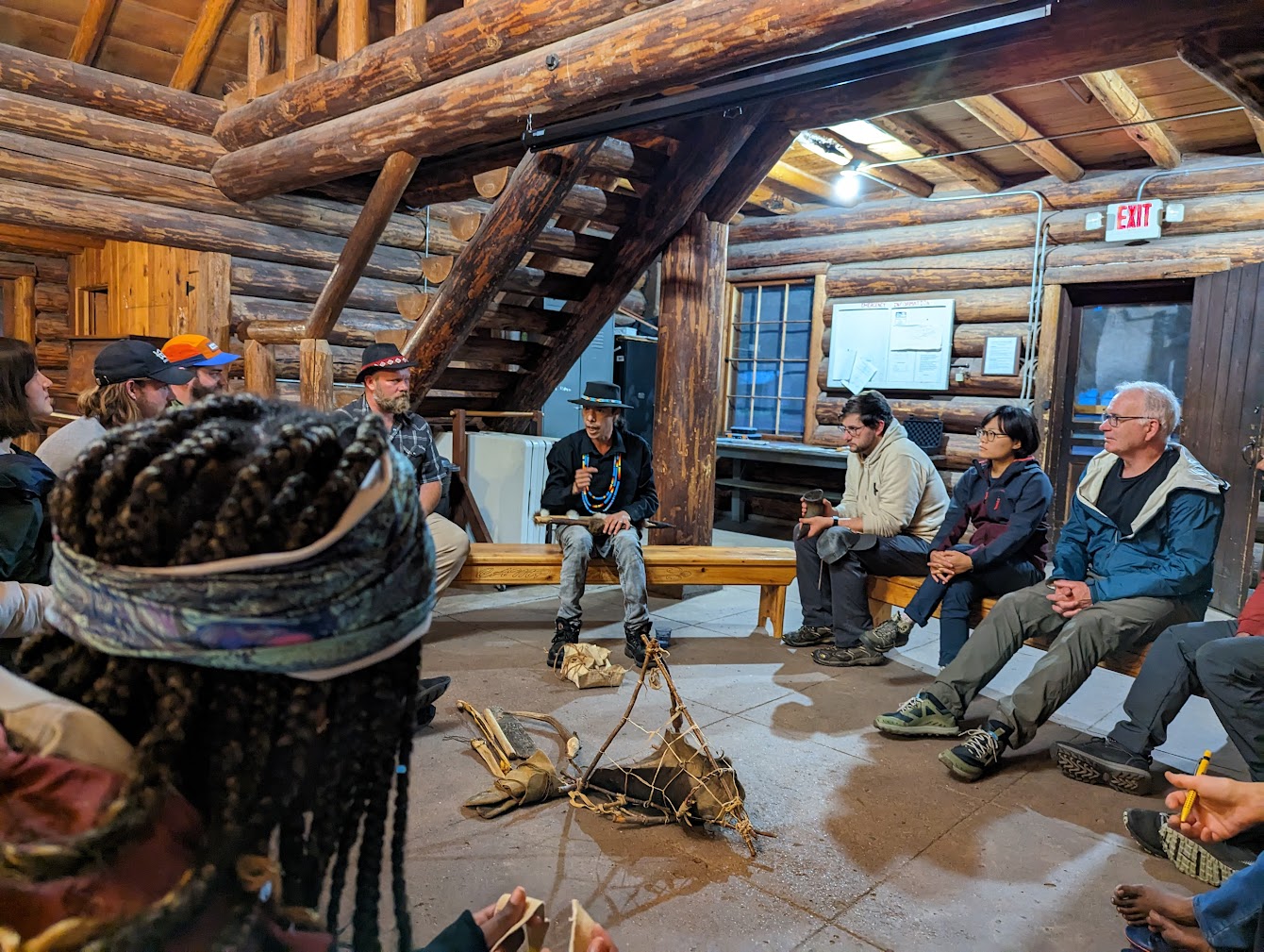

These experiences cracked us all wide open. We allowed ourselves to be vulnerable and helped each other learn and grow. We began to understand our interconnectedness with a living world that now included us. We shared our authentic selves and began to imagine those pathways we were looking for. And like any good educational experience, we were left with more questions than answers.
I wish everyone could experience a living world intervention. To be swooped up and placed in a wild ecosystem, with the time and companions to really process it. To find oneself in this miracle of life is a gift we all deserve. For now, the Biomimicry Institute will do our humble best to select some of the brightest minds to participate in our programs and carry what they learned back to their own ecosystems. Watch for more from these individuals in the weeks (and years!) to come, and in a ripple effect throughout the world.
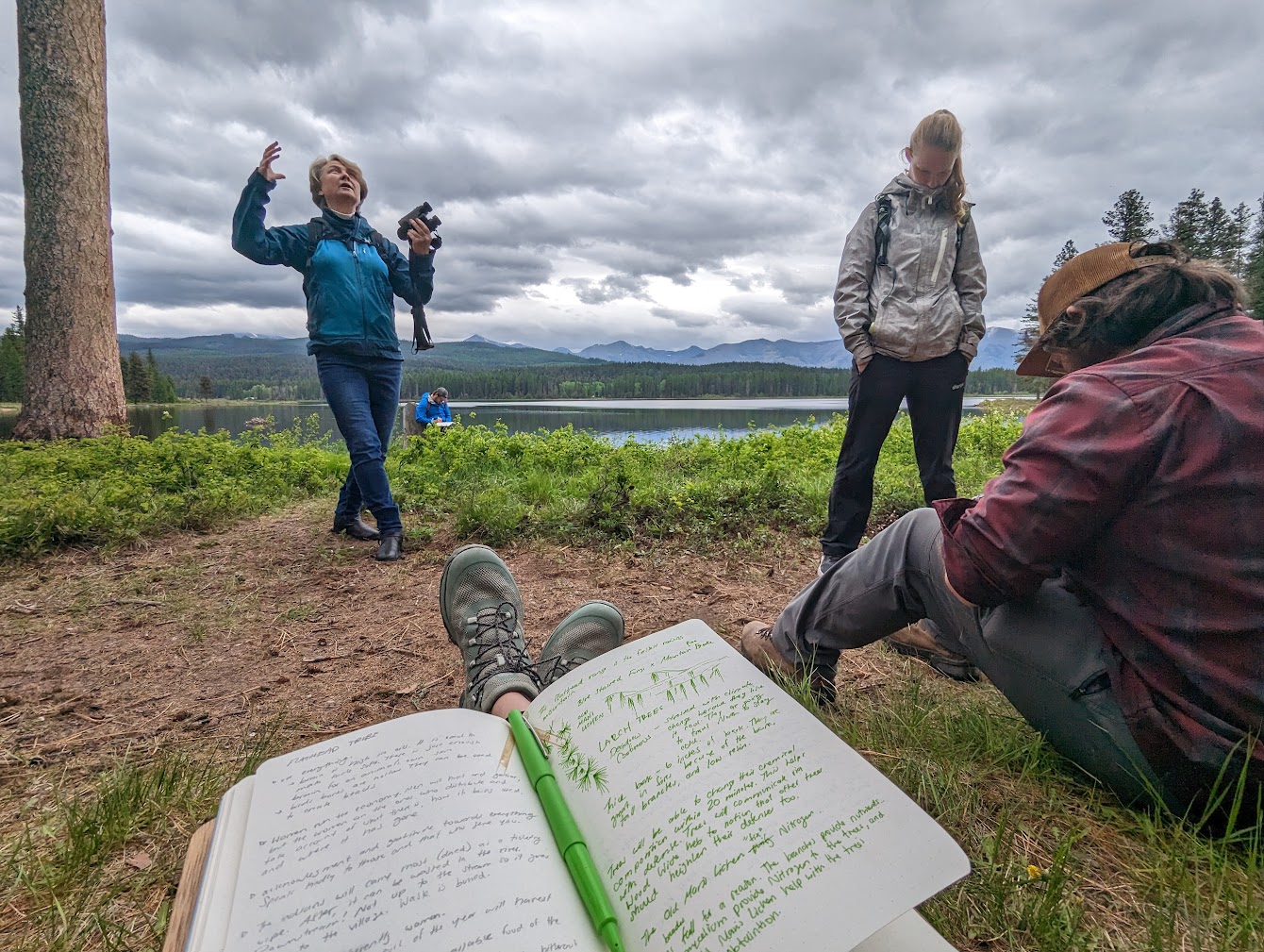
 Dave Hutchins manages the Biomimicry Institute’s Launchpad Program, supporting scientists and researchers as they take their nature-inspired solutions from the lab to the market. He has a background in environmental engineering with a PhD in materials science, where his research focused on remediating mining impacted waters. He has served as a research associate at the Center for Advanced Materials Processing and as professor with Montana Technological University. Dave is also a sculptor, entrepreneur, and amateur journalist who is passionate about science communication and the intersection of art and science. He has volunteered with Butte’s Citizens’ Technical Environmental Committee, the Clark Fork Watershed Education Program, and founded the community bicycle shop Bike Lab.
Dave Hutchins manages the Biomimicry Institute’s Launchpad Program, supporting scientists and researchers as they take their nature-inspired solutions from the lab to the market. He has a background in environmental engineering with a PhD in materials science, where his research focused on remediating mining impacted waters. He has served as a research associate at the Center for Advanced Materials Processing and as professor with Montana Technological University. Dave is also a sculptor, entrepreneur, and amateur journalist who is passionate about science communication and the intersection of art and science. He has volunteered with Butte’s Citizens’ Technical Environmental Committee, the Clark Fork Watershed Education Program, and founded the community bicycle shop Bike Lab.

